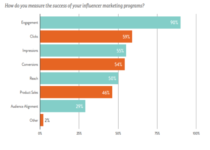International Growth Marketing Strategies: How Top Brands Mastered Global Expansion
You’re a CMO or marketing leader with a brilliant product or service, your domestic market loves your brand, and the tea and biscuits are flowing nicely. So, why endure the headache of international market expansion? Well, beyond the obvious lure of more revenue, it’s about staying ahead of the curve. New markets offer fresh growth opportunities when your domestic market is saturated, diversification of risk (don’t put all your eggs in one basket, eh?), and access to new talent and innovations. As McKinsey & Company aptly put it, CMOs are increasingly becoming the “primary custodian of the customer,” and that customer base is undeniably global.
But it’s not all sunshine and lollipops, is it? Global market expansion comes with significant international expansion challenges. We’ve all heard the cautionary tales. Tesco’s foray into the US with “Fresh & Easy” being a prime example, where, despite extensive research, they simply didn’t quite crack the American shopper’s code, leading to significant losses and an eventual retreat, as documented by Business Leader. It highlights the absolute necessity of understanding local market nuances, which brings us rather neatly to our first strategic approach.
Localised Marketing Strategies: Tailoring for tastes (and teacups)
One might think a universally loved brand could just plonk itself down anywhere and expect success. Not so fast, sunshine! The “one-size-fits-all” approach often ends up fitting no one at all, much like a pair of ill-fitting trousers. True international success often comes from a finely-tuned localised marketing strategy, adapting messaging, products, and even business models to resonate with specific cultures.
Case study: Netflix – The global storyteller with local accents
Remember when Netflix was just a DVD-by-mail service? My, how times have changed! Netflix’s global expansion strategy has been nothing short of a masterclass in content localisation. Instead of just pushing American content worldwide, Netflix has invested heavily in creating and acquiring original programming tailored to local tastes and languages. Think “Dark” in Germany, “La Casa de Papel” in Spain, or “Sacred Games” in India.
As highlighted by Greenlight Coverage, Netflix’s localisation strategy revolves around “targeted content” and “partnerships with local talent.” They harness data analytics to understand viewer insights and offer personalised content, breaking language barriers with accessible subtitling and dubbing. This isn’t just about translation; it’s about cultural fluency in marketing, ensuring that their narratives truly connect with regional viewers. They’ve effectively become a local product in every international market they enter, proving that while the platform is global, the storytelling is deeply rooted in local culture.
Case study: L’Oréal – Beauty in every hue (and language)
Another brilliant example of product and marketing localisation is L’Oréal. The global beauty giant understands that beauty isn’t a monolith. What appeals to a consumer in Paris might be entirely different from what resonates in Beijing or Rio. L’Oréal’s success, as detailed by MBA Knowledge Base, lies in its ability to adapt products, marketing campaigns, and even brand extensions to suit diverse cultural patterns and economic strata. Their portfolio includes a plethora of brands, each tailored to specific market segments, rather than trying to force a generic global product. Their strategy is concentrated on cross-cultural marketing, effectively positioning them as a local entity within every international market. It’s a testament to truly understanding their audience, wherever they may be.
Centralised Marketing Strategies: Running a tight ship
While localisation is undeniably powerful, some companies prefer a more centralised marketing approach, maintaining a tighter grip on branding, messaging, and overall strategy from headquarters. This can be incredibly efficient, ensuring brand consistency and streamlined decision-making across all international markets. However, the trick is to avoid appearing tone-deaf or culturally insensitive.
Case study: IKEA – Flat-packing the world (with a Swedish accent)
IKEA, the Swedish furniture behemoth, is a prime example of a largely centralised marketing strategy with smart local adaptations. The core concept – affordable, flat-pack furniture for the masses – remains consistent globally. Their iconic stores, labyrinthine layouts, and even the self-assembly concept are largely uniform.
However, IKEA isn’t entirely rigid. They understand that what constitutes a “small living space” or a “family meal” can vary significantly across cultures. While the fundamental product range is global, they subtly adjust product offerings, marketing imagery, and even food items in their famed cafeterias to cater to local market preferences. For instance, in China, you might find specific ranges suited to smaller urban apartments, and in India, they’ve adapted their supply chain and pricing to be more accessible, as highlighted in research. This is a centralised marketing organisational strategy with a clever dab of local flavour, much like adding a dash of Worcester sauce to your shepherd’s pie – still British, but with a bit of a kick.
Case study: Zara – Fashion’s fast track, globally
Zara’s success in rapid global market expansion is largely down to its highly centralised and incredibly agile supply chain. They don’t predict fashion trends months in advance; they react to them at lightning speed. Design, manufacturing, and distribution are tightly controlled from their Spanish headquarters, allowing them to get new designs from sketchpad to store shelves globally in a matter of weeks. This “rapid-fire fulfilment,” as Thomasnet describes it, gives them a competitive edge. While they adapt designs to local market feedback, the underlying operational machine is a marvel of centralised efficiency. It’s a bit like a well-oiled machine, churning out trendy threads before anyone else has even finished their morning cuppa.
Hybrid Global Marketing Strategies: A bit of both, why not?
Many successful global enterprises find their sweet spot somewhere in the middle, adopting a hybrid marketing organisational strategy. This often entails strong central brand guidelines and strategic oversight, coupled with significant autonomy for regional teams to execute marketing and operations in a way that resonates locally. It’s about finding that delicate balance, a bit like brewing the perfect cup of tea – you need the right water temperature and just the right amount of milk.
Case study: Unilever – Global brands, local roots
Unilever, a consumer goods giant with a portfolio spanning everything from Hellmann’s mayonnaise to Dove soap, is a fantastic example of a hybrid global marketing strategy. They manage a vast array of global brands, but their marketing execution is deeply localised. They understand that while a brand like Dove might stand for “real beauty” worldwide, the cultural interpretation and messaging will differ significantly from markets like India to the USA.
According to Business Model Analyst, Unilever aims to enhance emotional connections through “purpose-driven branding” and targets emerging markets with “localised products and marketing.” They adjust messaging, packaging, and campaigns to fit regional cultures, and even leverage rural outreach programs in countries like India to ensure product availability in remote villages. They’ve found a way to maintain global brand integrity while being intensely relevant on a local level.
Case study: HSBC – The world’s local bank
HSBC famously branded itself as “the world’s local bank,” which perfectly encapsulates a hybrid international strategy. While their overarching financial services and corporate structure are fundamentally global, they’ve long emphasized the importance of local presence and understanding of regional economies and local customer needs.
As per their strategy statement, international connectivity is at the heart of their business, operating in 58 countries and territories. They emphasise building leadership in key markets like Hong Kong and the UK, while leveraging their international networks to serve clients requiring global banking services. They provide a standardised suite of services, but the customer experience and specific product offerings are often adapted to local regulatory compliance and evolving cultural expectations. It’s about being globally strong, yet locally nimble.
Agile Marketing Strategies: a less trodden path
While most CMOs would baulk at the idea of an entirely “unstructured” marketing team for global growth, there are instances where an agile global marketing, almost guerrilla-style approach can bear fruit, particularly in early-stage market expansion or niche market entry. This often relies on a deeply entrepreneurial spirit within local teams and a willingness to experiment. It’s less about a grand blueprint and more about a series of calculated sprints.
While specific, large-scale case studies of truly “unstructured” global marketing teams are rare for major corporations (as the very nature of global expansion usually demands some structure), the underlying principle of empowering local teams to be highly autonomous and experimental is seen in the early days of many successful expansions. Think of startups testing the waters in new markets, where small, nimble teams are given the freedom to iterate rapidly based on local feedback, without heavy central oversight initially. This can be a high-risk, high-reward strategy, but when it works, it’s truly a thing of beauty.
Final thoughts: Strategic international marketing beyond the border, beyond the brief
So, what’s the takeaway for brilliant marketing leaders? Devising global expansion strategies isn’t a simple copy-and-paste job. Successful international marketing requires a nuanced understanding of your business, your target markets, and a healthy dose of flexibility. Whether your organisation lean towards a localised approach, centralised command, or a clever hybrid model, the key is always the same: know your audience.
Don’t be a stranger to cultural differences in global marketing, embrace the nuances, and for goodness’ sake, remember that what works in one market might just fall flatter than a pancake in another. With careful international growth planning, genuine market insight, and perhaps a touch of adaptability, your global expansion could be less of a daunting trek and more of a delightful jaunt around the world. And who wouldn’t want that?
The post International Growth Marketing Strategies: How Top Brands Mastered Global Expansion appeared first on AccuraCast.


